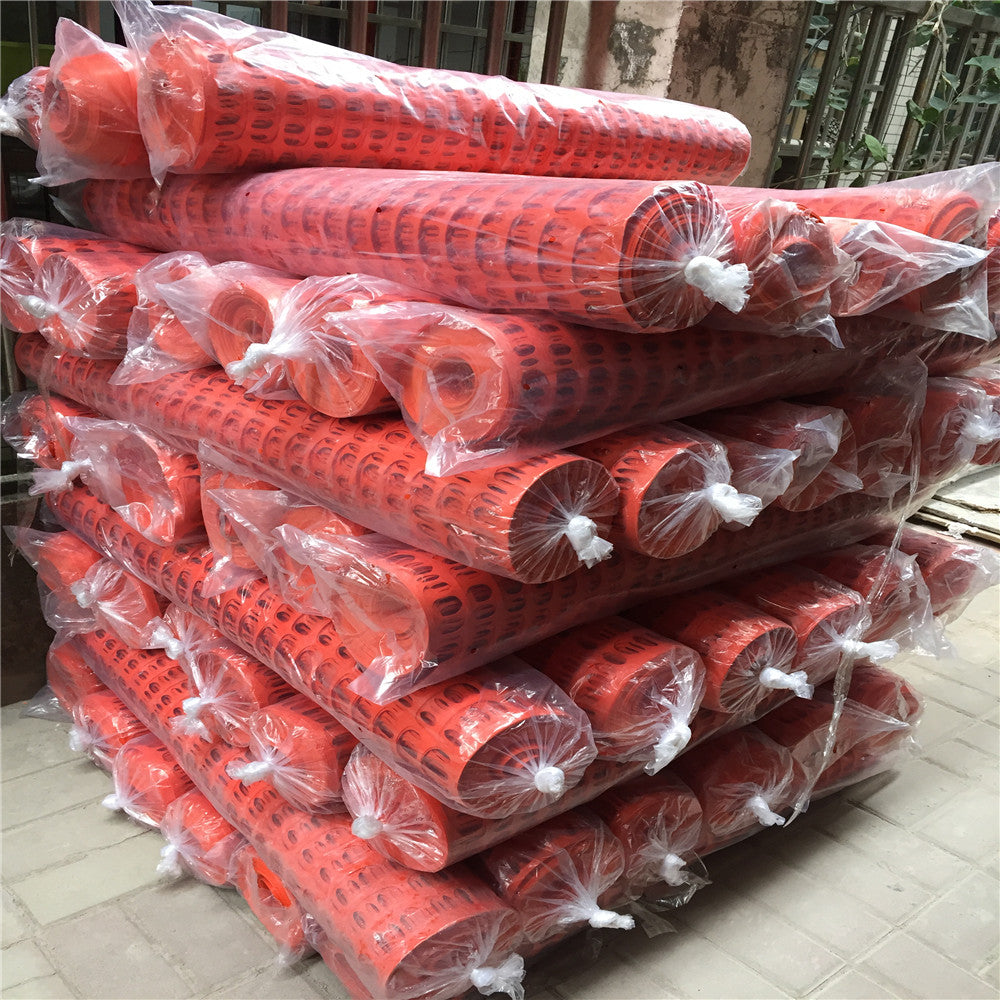
How can we ensure that plastic safety fences do not tip over or break in wind and rain?
Share
To ensure that the plastic safety fence remains stable and does not collapse or crack in the wind and rain, comprehensive control is required from four aspects: foundation reinforcement, structural design, material selection, and wind protection measures. The specific operation points are as follows:
I. Deep Foundation Reinforcement (Core Anti-Tipping)
Deep Embedding of Columns: The depth of the columns should be ≥ 1/6 of the total height (for example, if the plastic safety fence is 2 meters high, the depth should be ≥ 35 cm). For soft soil foundations, it needs to be deepened to 50-60 cm and then fixed with concrete pouring.
Foundation Reinforcement: When the soil is soft, dig a pit and replace it with crushed stone and sand (20-30 cm thick) and compact it to enhance the bearing capacity of the foundation.
Bottom Weighting: Place sandbags or concrete blocks at the bottom of the plastic safety fence (each block ≥ 20 kg) to disperse the wind impact.
II. Structural Wind Resistance Design (Key to Avoid Breakage)
Root Reinforcement: Weld reinforcing plates at the connection point between the column and the ground, or wrap with anti-rust metal kits to avoid stress concentration that could lead to fracture.
Triangular Support: Install diagonal supports every 3-4 meters (angle steel/slot steel), forming a 45° angle with the plastic safety fence columns, to enhance the overall rigidity.
Crossbeam Reinforcement: Add a horizontal steel beam at the top, and secure or weld it to the columns to improve the resistance to twisting.
III. Dynamic Wind Resistance Measures
Rope Anchoring:
Steel wire ropes run longitudinally at the top of the plastic safety fence (diameter ≥ 6 mm);
The rope ends are slantedly pulled to the ground anchor (depth ≥ 50 cm), with an angle ≤ 30°. When the wind force is strong, the spacing of the ropes is reduced to 2 meters.
Wind-Deflecting Structure: The mesh design is in the form of rhombus or square (hole diameter 5-10 cm), reducing wind resistance and avoiding the collapse of the fence due to strong wind pressure.
